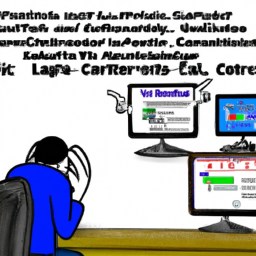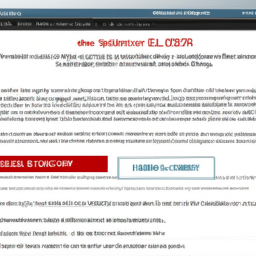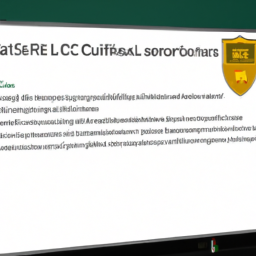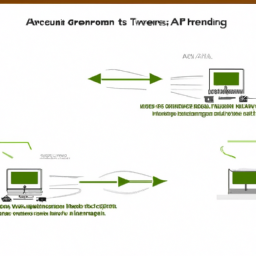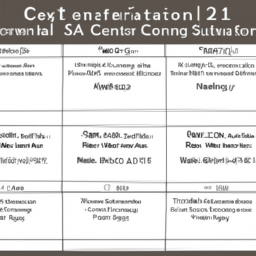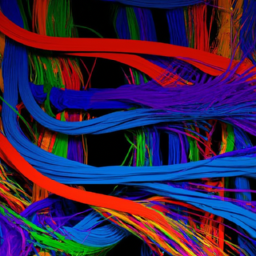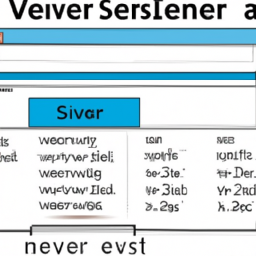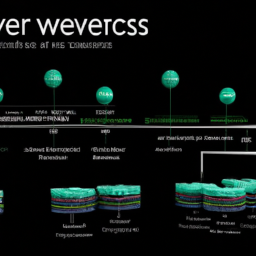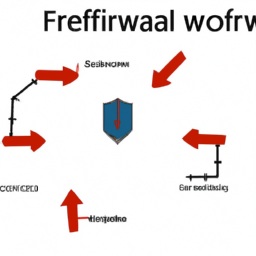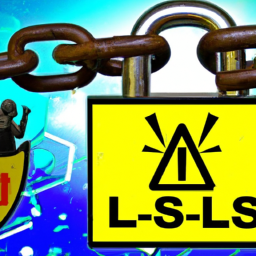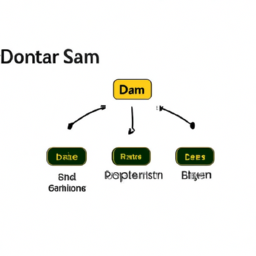In today’s fast-paced digital world, your website’s loading speed is more than just a number. It’s a symbol of your commitment to delivering an exceptional user experience. Just like a slow-loading webpage can leave visitors feeling frustrated and impatient, it can also have a significant impact on your conversions and sales.
Think about it: when was the last time you waited for a slow-loading website to load completely? Chances are, you clicked away and found a faster alternative. Well, your potential customers are no different.
Research shows that a mere one-second delay in page load time can result in a 7% decrease in conversions. And if that’s not enough to convince you, a study by Google found that 53% of mobile users abandon a site that takes longer than three seconds to load.
So, if you want to boost your conversions and sales, optimizing your website’s loading speed is not just a nice-to-have; it’s a must. In this article, we’ll explore the techniques and strategies you can implement to ensure your website loads lightning-fast, keeping your visitors engaged and turning them into loyal customers.
Key Takeaways
- Slow loading speed can lead to a decrease in conversions and sales.
- Mobile users have low tolerance for slow loading speed and are likely to abandon a site that takes longer than three seconds to load.
- Optimizing website loading speed can result in a doubling of conversion rates and sales.
- Techniques such as enabling browser caching, optimizing server response time, and minifying and compressing files can improve website loading speed.
The Impact of Slow Loading Speed on User Experience
Slow loading speed can seriously frustrate users, leading to a negative user experience and potentially driving them away from your website. When users encounter slow loading times, they’re more likely to abandon your site and seek alternatives.
The negative effects of slow loading speed go beyond just user frustration. Studies show that 47% of users expect a website to load in 2 seconds or less, and if it takes longer than 3 seconds, 40% of users will leave. This can have a significant impact on your conversion rates and ultimately result in lost sales.
Don’t underestimate the importance of optimizing your website’s loading speed. By ensuring a fast and seamless user experience, you can increase your chances of converting visitors into customers.
Decreased Conversion Rates and Lost Sales
Lagging website performance can lead to a decline in conversion rates and missed opportunities for sales. When your website takes too long to load, potential customers become frustrated and are more likely to leave your site before making a purchase. This increased bounce rate directly impacts your conversion rates and ultimately results in lost sales.
Research shows that even a one-second delay in page load time can lead to a 7% reduction in conversions. Customers expect a fast and seamless online experience, and if your website fails to deliver, they will simply go elsewhere.
To prevent this, optimizing your website’s loading speed is crucial. By doing so, you can provide a better user experience, increase conversion rates, and ultimately drive more sales.
Importance of Optimizing Website Loading Speed
Enhancing the loading speed of your website is essential in order to provide a seamless and efficient user experience, ultimately resulting in increased customer engagement and higher conversion rates. Studies show that a delay of just one second in page load time can lead to a 7% reduction in conversions. This means that potential customers are more likely to abandon your site and look elsewhere if it takes too long to load. By improving website performance and boosting user engagement, you can significantly increase your chances of converting visitors into paying customers. A slow website not only frustrates users, but it also harms your bottom line. Take a look at the table below to see the impact of loading speed on conversions and sales:
| Loading Speed | Conversion Rate | Sales |
|---|---|---|
| Slow | 2% | $1000 |
| Fast | 4% | $2000 |
As you can see, optimizing your website’s loading speed can double your conversion rate and sales. In the next section, we will discuss techniques for improving website loading speed without compromising on functionality or design.
Techniques for Improving Website Loading Speed
Boost your website’s loading speed and watch as your online presence takes flight, capturing the attention and interest of customers from all corners of the web.
To achieve a lightning-fast website, follow these three techniques:
-
Enable browser caching: By instructing browsers to store certain files, like images and CSS, on a user’s device, browser caching reduces page load time for returning visitors.
-
Optimize server response time: A slow server can significantly impact your website’s loading speed. Minimize server response time by choosing a reliable hosting provider and optimizing your server configuration.
-
Minify and compress files: Minifying HTML, CSS, and JavaScript files reduces their size, allowing them to be downloaded faster. Compressing files further reduces their size without compromising quality.
By implementing these techniques, you can drastically improve your website’s loading speed.
And speaking of speed, let’s now delve into the importance of image optimization and how it contributes to a faster website.
Image Optimization
Want to captivate your online audience and keep them engaged? Take a moment to discover the power of image optimization and how it can transform your website’s performance. By optimizing your images, you can significantly improve your website’s loading speed, resulting in better user experience and increased conversions. One effective technique is lazy loading, which allows images to load only when they are visible to the user, reducing the initial load time. Another important aspect is responsive design, which ensures that your images are appropriately sized and displayed across different devices, further enhancing loading speed. According to a study by Google, a one-second delay in page load time can lead to a 7% reduction in conversions. So, don’t let slow loading images hinder your success. Optimize your images, delight your audience, and boost your sales. Speaking of performance improvements, let’s now explore the benefits of caching and compression.
Caching and Compression
Alright folks, buckle up and get ready to dive into the world of caching and compression. We’re about to uncover some seriously cool tricks that will turbocharge your website’s performance.
-
Browser caching: With browser caching, you can store certain files on your visitors’ computers, allowing them to load your website faster when they revisit. By reducing the number of requests made to your server, you can significantly improve loading speed and user experience.
-
Gzip compression: Compressing your website’s files with Gzip reduces their size without sacrificing quality. This means that your visitors can download your pages faster, resulting in quicker load times.
-
Minimizing http requests: Now that you’ve learned about caching and compression, it’s time to take it a step further. By minimizing http requests, you can further optimize your website’s loading speed and boost conversions. But we’ll get into that in the next section.
Minimizing HTTP Requests
Let’s dive into the world of minimizing HTTP requests and see how you can optimize your website’s performance.
One effective way to do this is by implementing lazy loading. Lazy loading is a technique that delays the loading of non-critical elements until they’re actually needed. By doing so, you can reduce the number of HTTP requests and improve your website’s loading speed.
Another strategy is to utilize content delivery networks (CDNs). CDNs store your website’s static files in multiple servers around the world, allowing users to access them from the server closest to their location. This significantly reduces the time it takes to retrieve these files, resulting in faster loading times.
By minimizing HTTP requests and leveraging techniques like lazy loading and CDNs, you can enhance your website’s performance and provide a seamless user experience.
Now, let’s move on to the next section about mobile optimization and loading speed.
Mobile Optimization and Loading Speed
To enhance the mobile experience and improve loading speed, begin by optimizing your website for mobile devices through responsive design and utilizing techniques like image compression and minification of code.
Responsive design ensures that your website adapts seamlessly to different screen sizes, providing a user-friendly experience on mobile devices. Implementing Accelerated Mobile Pages (AMP) further enhances loading speed by stripping down unnecessary elements and delivering content instantly.
Studies show that a one-second delay in mobile page load time can result in a 7% decrease in conversions. By optimizing your website for mobile devices and implementing AMP, you can significantly reduce loading time and increase the chances of converting visitors into customers.
Now, let’s move on to monitoring and analyzing loading speed performance to further refine your website’s performance.
Monitoring and Analyzing Loading Speed Performance
Now that you understand the importance of mobile optimization for your website’s loading speed, let’s dive into the next step: monitoring and analyzing its performance. This is where performance tracking and website speed analysis come into play.
By keeping a close eye on your website’s loading speed, you can identify any bottlenecks or areas for improvement. With performance tracking tools, you can gather valuable data on how your website is performing across different devices and browsers. This data-driven approach allows you to make informed decisions and optimize your website for better loading speed.
By regularly analyzing your website’s loading speed, you can ensure a seamless user experience and ultimately boost conversions and sales.
So, let’s explore the world of performance tracking and website speed analysis to maximize your website’s potential.
-
Sub-list 1:
- Why is performance tracking crucial?
- Identify bottlenecks and areas for improvement
- Make informed decisions based on data
-
Sub-list 2:
- Benefits of website speed analysis
- Ensure a seamless user experience
- Boost conversions and sales.
Frequently Asked Questions
How does website loading speed affect search engine rankings?
Website loading speed directly impacts website visibility and search engine rankings. Slow-loading websites are penalized by search engines and receive lower rankings. This affects user experience as well, as users are more likely to click away from a slow-loading website.
Studies have shown that even a one-second delay in loading time can result in a significant drop in conversions and sales. Optimizing website speed is crucial for both search engine rankings and overall business success.
Can slow loading speed lead to higher bounce rates?
Slow loading speed can indeed lead to higher bounce rates. When a website takes too long to load, users tend to get frustrated and leave the page before it even finishes loading. This negative impact on user experience can significantly increase bounce rates.
Studies have shown that even a one-second delay in page load time can result in a 7% decrease in conversions. Therefore, it’s crucial to prioritize website loading speed to maximize conversions and sales.
Does website loading speed impact user engagement and time spent on site?
Website loading speed has a direct impact on user engagement and time spent on site. Slow loading speeds frustrate users and cause them to abandon the site, resulting in decreased engagement and shorter visit durations.
Research shows that even a one-second delay in loading time can lead to a 7% reduction in conversions. Optimizing website performance is crucial for retaining users, increasing engagement, and ultimately driving more conversions and sales.
What are the potential consequences of slow loading speed on mobile devices?
Slow loading speed on mobile devices can have a negative impact on your conversion rates. Research shows that 53% of mobile users will abandon a website if it takes more than three seconds to load.
Additionally, a one-second delay in loading time can lead to a 7% decrease in conversions.
With the increasing use of mobile devices for online shopping, optimizing your website’s loading speed is crucial for driving sales and maximizing your revenue.
Is there a correlation between website loading speed and customer trust or brand perception?
There is a strong correlation between website loading speed and customer trust and brand perception. Slow loading websites often result in frustration and dissatisfaction among users, leading to a negative perception of your brand.
Research shows that 79% of customers who are dissatisfied with a website’s performance are less likely to buy from that site again. By ensuring fast loading speeds, you can enhance customer satisfaction, improve brand perception, and ultimately drive more sales.
Conclusion
In conclusion, the loading speed of your website plays a crucial role in driving conversions and sales. Slow loading speeds can result in a poor user experience, leading to decreased conversion rates and lost sales.
Optimizing your website’s loading speed is essential for ensuring a smooth and seamless browsing experience for your visitors. According to a recent study, 47% of consumers expect a web page to load in 2 seconds or less.
By implementing techniques such as image optimization, caching, and minimizing HTTP requests, you can significantly improve your website’s loading speed and boost your conversions and sales.
Don’t let slow loading speeds hinder your business success – take action today!


















